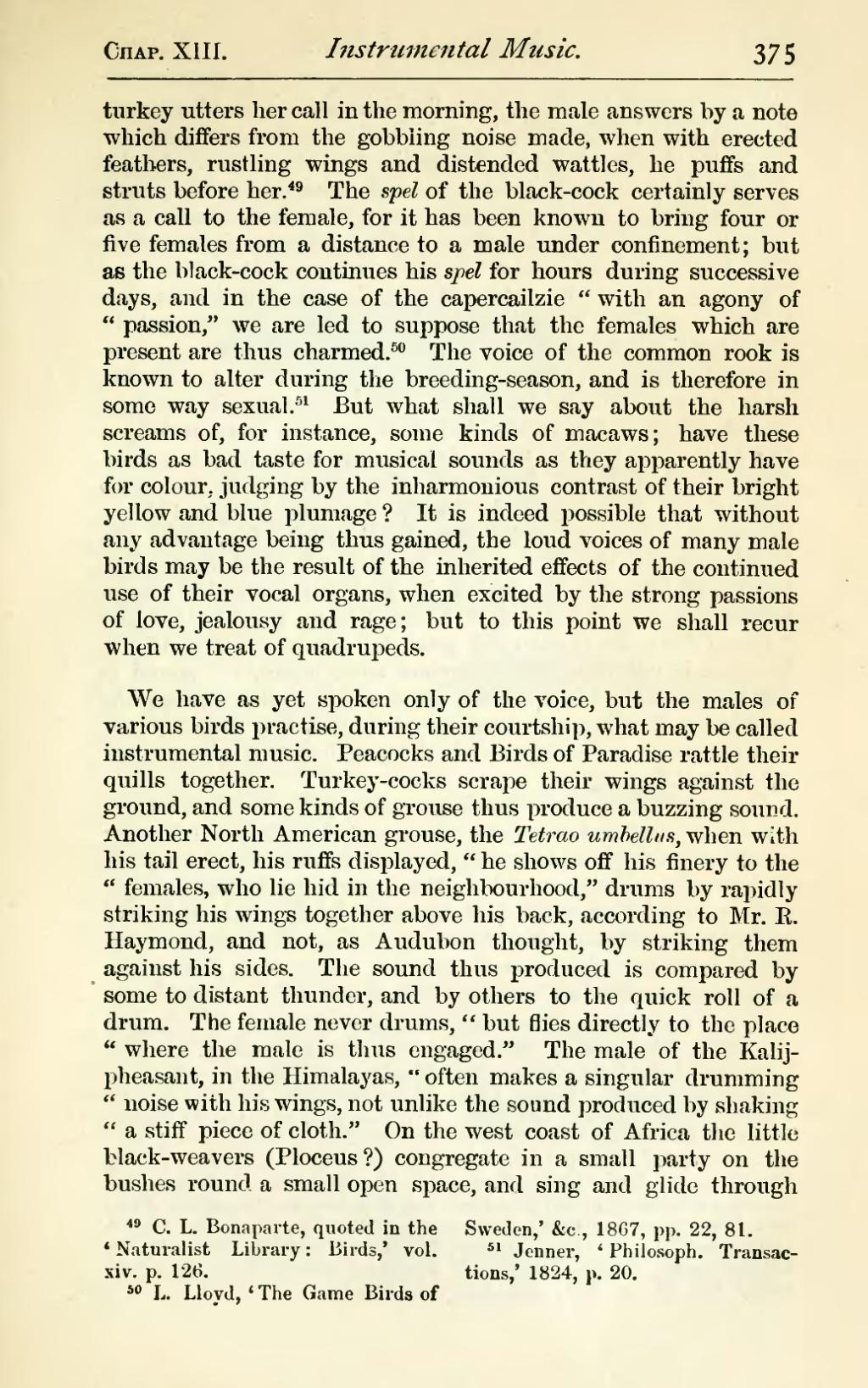turkey utters her call in the morning, the male answers by a note which differs from the gobbling noise made, when with erected feathers, rustling wings and distended wattles, he puffs and struts before her.[1] The spel of the black-cock certainly serves as a call to the female, for it has been known to bring four or five females from a distance to a male under confinement; but as the black-cock continues his spel for hours during successive days, and in the case of the capercailzie "with an agony of passion," we are led to suppose that the females which are present are thus charmed.[2] The voice of the common rook is known to alter during the breeding-season, and is therefore in some way sexual.[3] But what shall we say about the harsh screams of, for instance, some kinds of macaws; have these birds as bad taste for musical sounds as they apparently have for colour, judging by the inharmonious contrast of their bright yellow and blue plumage? It is indeed possible that without any advantage being thus gained, the loud voices of many male birds may be the result of the inherited effects of the continued use of their vocal organs, when excited by the strong passions of love, jealousy and rage; but to this point we shall recur when we treat of quadrupeds.
We have as yet spoken only of the voice, but the males of various birds practise, during their courtship, what may be called instrumental music. Peacocks and Birds of Paradise rattle their quills together. Turkey-cocks scrape their wings against the ground, and some kinds of grouse thus produce a buzzing sound. Another North American grouse, the Tetrao umbellus, when with his tail erect, his ruffs displayed, "he shows off his finery to the females, who lie hid in the neighbourhood," drums by rapidly striking his wings together above his back, according to Mr. R. Haymond, and not, as Audubon thought, by striking them against his sides. The sound thus produced is compared by some to distant thunder, and by others to the quick roll of a drum. The female never drums, "but flies directly to the place where the male is thus engaged." The male of the Kalij-pheasant, in the Himalayas, "often makes a singular drumming noise with his wings, not unlike the sound produced by shaking a stiff piece of cloth." On the west coast of Africa the little black-weavers (Ploceus?) congregate in a small party on the bushes round a small open space, and sing and glide through
